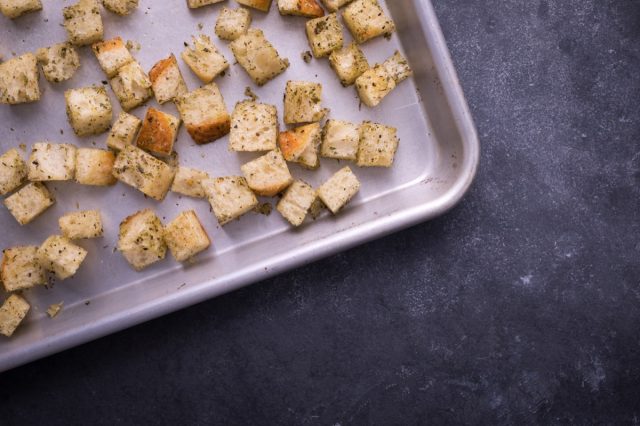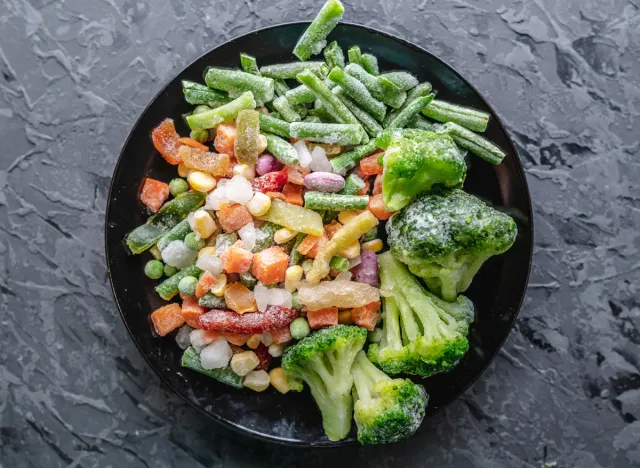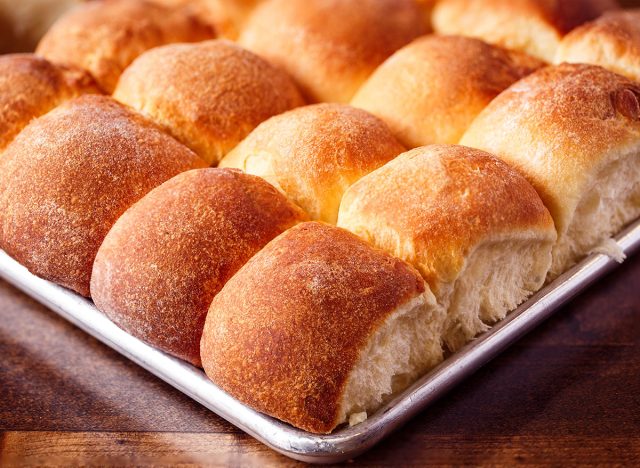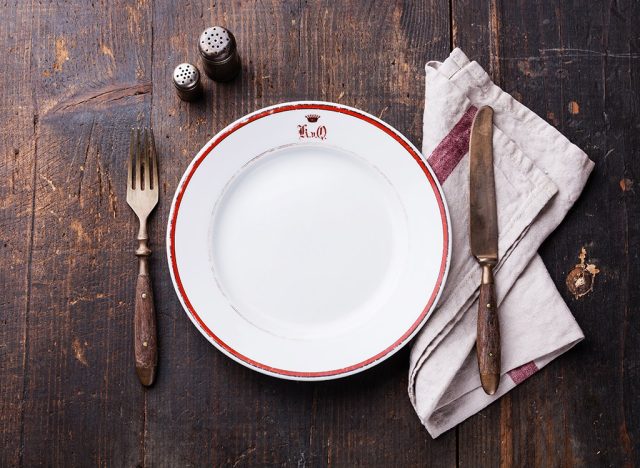6 Ways Chefs Cut the Cost of Food That Everyone Should Know

The restaurant business has never been for the faint of heart, and making a profit hasn't gotten any easier in the past few years. The National Restaurant Association estimates that a 30% failure rate is the norm in the U.S. restaurant industry, and with supply chain issues, rising costs, and lingering issues from the pandemic, it's actually gotten worse. So, like everyone else, chefs and restaurant owners look for ways to cut the cost of food through creative cooking and fiscally smart planning.
We spoke to industry experts about some of these techniques—which don't usually impact your experience— and found a few you can even use at home! Read on for smart ways restaurants cut corners and stretch their dollar. Any smart home cook knows these tips well, and if not, read on for great ways to save money by using every bit of food.
They never throw food away.

Chef and author Allen Bixby. tries to use every bit of what is leftover. "Bread heels and extra slices became croutons. We cut chickens from whole [a whole bird] for fryer pieces, all the backs and trimmings were roasted and made into golden chicken stock that was the base for most of our homemade soups," says Bixby. "We'd keep boneless skinless chicken breasts on the line for only a day or two, if their items weren't selling right then, we'd grill them for a chilled grilled chicken sandwich on the menu."
The use frozen ingredients

"Some restaurants may choose to use frozen ingredients, such as vegetables or pre-made dough, in order to save on prep time and reduce food waste," says Shelly Martin, chef and writer at Easy Kitchen Guide. "These ingredients can be just as fresh and high-quality as their fresh counterparts, and they can be a convenient option for busy restaurants."
Fresh veggies are great, but only if you use them before they go bad. Buy frozen veggies on sale but be sure to use them before the expiration date.
They use "par-baked" goods

Par baked means partially baked and it's an easy shortcut for restaurants that aren't focused on baked goods. "Guests get warm-from-the-oven baked breads, without all the hassle in the kitchen," says Christine Prociv, Chief Commercial Officer, Retail, of La Brea Bakery. "Restaurants that do not have the space, time, or staff to bake breads from scratch, but still want to offer diners artisan baked bread, incorporate frozen par-baked breads into their menu. A great example of this is artisan dinner rolls, baguettes, and loaves. The exact amount needed can be baked, reducing product waste and offering customers fresh-baked bread."
Keep frozen par-baked rolls on hand—there are many brands to choose from these days—to avoid wasting anything fresh.
Leftover fat equals fresh flavor

We bet your grandmother did this one. Cooking bacon means you're cooking off the fat, but don't dump it in the trash or drain, says Bixby. Use it to make gravy or flavor vegetables, he explains, "We kept the bacon fat and would use it for baked potatoes, and to make roux for country gravy and corn chowder."
Specials are made with what's available

Bixby also says a great way to train newer chefs in a restaurant is to put them in charge of specials, with just one limitation. "I would let them make their own specials with the proviso that they had to use ingredients we had on hand," he told us. "It was a fun way for them to be creative, and being in a smaller community, they developed their own following for certain items."
Be your own sous chef and experiment with anything in your fridge that is about to go bad.
They stop buying what isn't working

Bigger restaurants and chains have a lot of luck tracking what's selling (and what's not) and tweaking to get rid of what's not selling, says Chef Jodi Pemberton of Eat Pallet.
She identifies the lowest-selling products and phases them out. "You can't afford to keep ingredients that aren't moving because not only will they add up to your waste, it will also cause a miss of opportunity to focus on items that really sell."
Martin echoes this, saying, "Some restaurants may streamline their menu by offering a smaller selection of dishes. This can help reduce food waste and make it easier for the kitchen staff to prepare and serve the dishes." Translation: If no one is eating the tofu, just stop buying it.









